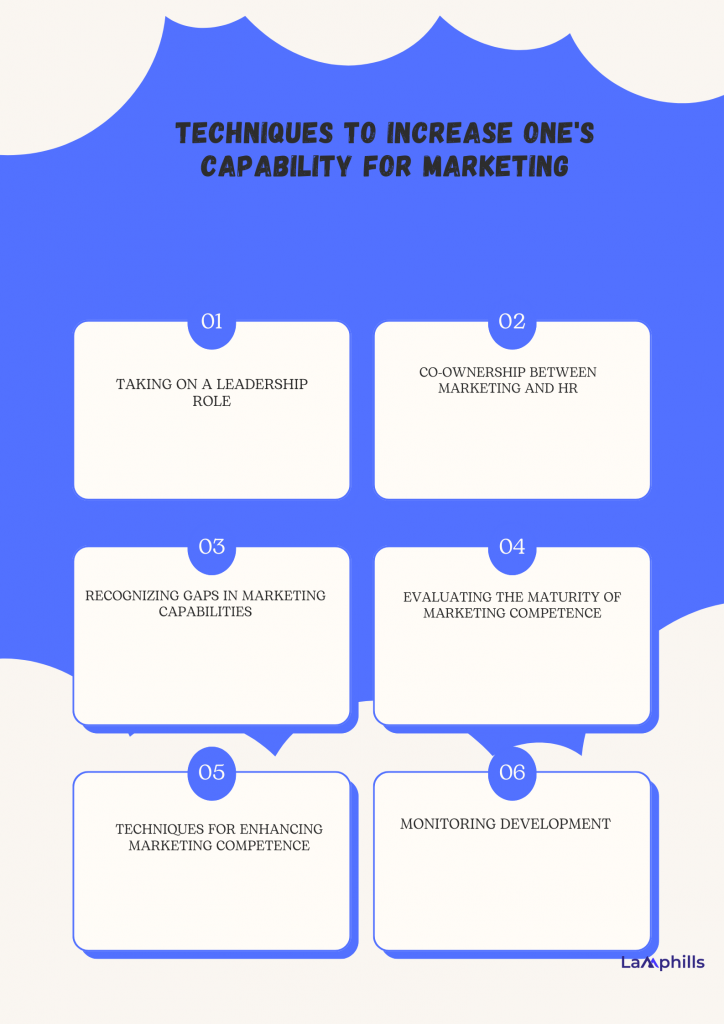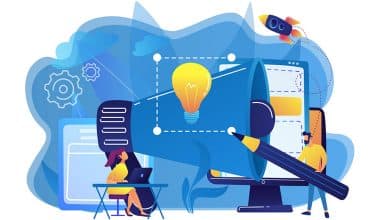Having worked in this industry for many years and being a P.R. professional, I would argue that creating a long-term P.R. strategy and having the know-how to promote a product successfully are equally vital for a company. Your PR plan is important, but without strong copywriting, digital marketing, and market research expertise, it doesn’t have a foundation to grow.
Marketing is the path to establishing your brand in the public eye and expanding its reach and visibility. However, your marketing capacity must be fully developed and capable of accomplishing this. So relax as I walk you through marketing capability and why you need it.
Key Takeaways
- Maintaining a clear direction and emphasis for all marketing operations requires that your marketing strategy be reviewed and updated regularly to ensure that it stays in line with overall business goals.
- Invest in continuous market research and use data analytics to acquire actionable insights into customer behaviour and market trends and more accurately target your marketing efforts.
- To increase your reach, engagement, and conversion rates, consistently hone your digital marketing abilities across various channels, such as social media, email, SEO, and PPC.
- Make educated changes to your tactics and track key performance indicators (KPIs) with marketing analytics solutions to ensure improved ROI and ongoing progress.
- To stay ahead of the competition and efficiently react to market changes, cultivate an innovative culture within your marketing team by promoting experimentation with new concepts and technologies.
What is Marketing capability?
Marketing capability combines skills, behaviors, tools, procedures, and knowledge marketing professionals need to deliver the corporate strategy. Examples include copywriting, market research, advertising, and digital marketing skills.
Techniques to Increase One’s Capability for Marketing
I would say building marketing competence. Developing marketing capacity involves the following steps:

#1. Taking on a Leadership Role
Capability development requires the support of your business leaders since they are the ones who make it possible for employees to participate in L&D. They accomplish this by laying out the precise objectives for instruction and the participant training plan. Most organizational transformation efforts fail in the absence of leadership support.
But first, you must get their buy-in before they can accomplish it. This is not to tell them why marketing capabilities are vital. Instead, it outlines how enhancing marketing capabilities would help them fulfil their business performance KPIs and solve their pain issues.
Stated differently, the key lies in comprehending leaders’ true desires. Do they desire more successful digital marketing? Make the case for equipping your marketing staff with the newest techniques.
Your CEO and other executives are concerned with the broad picture or the metrics that signify the company’s performance. Considering that marketing ability is necessary to launch your goods and brand in a way that consumers will notice, you’ll need to
Therefore, you won’t develop a positive customer perception or brand recognition if you don’t move forward with marketing capability. Fewer sales translate into lower income and profit. Put otherwise, a lack of action toward enhancing marketing competency results in subpar organizational performance.
#2. Co-ownership between Marketing and HR
When developing marketing capabilities, it’s essential to determine who is responsible for what in addition to getting the support of leaders. My HR leaders are not the only ones responsible for this; my business unit leaders are also. To guarantee the success of your L&D initiatives, you must establish co-ownership between HR and business divisions.
If HR is kept apart, business units will be more concerned with performance, and HR will be more focused on learning and development, resulting in a gap between business needs and how those needs are satisfied. Therefore, instead of allowing one group to assume whole responsibility, co-ownership between HR and business groups prevents:
- H.R. from developing development initiatives that aren’t pertinent or in line with the requirements of particular divisions.
- Preventing business divisions from designing development initiatives that align with corporate objectives.
In other words, to match business needs with particular business unit needs, my HR department and business units—in this case, my marketing functions—should collaborate and share accountability for L&D activities. Marketing can handle relevance to departmental needs, and HR can handle alignment with business goals
#3. Recognizing Gaps in Marketing Capabilities
Market shifts are unavoidable for businesses; thus, the skills marketing teams currently have won’t be sufficient as technology, industry norms, and best practices change. This leads to gaps in your knowledge, abilities, and behavior related to the market compared to what you’ll need (or need to continue developing).
Capability assessments are a simple method to identify capability deficiencies. You may be familiar with competency from its previous term, proficiency. Whatever word you choose, the idea is to have a level playing field against which to compare performance. The levels could seem as follows:
- Novice, intermediate, and expert
- Requires improvement, satisfies, and surpasses expectations.
Your capability gaps are located between the difference between your current level of competence in a capability and the degree of competency you require or aspire to meet. When talents are developed, competency should grow from beginning to intermediate or from intermediate to advanced.
#4. Evaluating the Maturity of Marketing Competence
Capability maturity comes next. It takes a broader business-wide approach than capability gaps, which focus on capability inside the marketing function. Capability maturity provides a more comprehensive understanding of the business’s overall proficiency and identifies the areas that should be developed first based on the business’s risk.
The typical representation of capability maturity is a linear development consisting of five levels:
- Reactive, in which ad hoc and unanticipated capabilities exist.
- Managed, in which project-by-project performance and competence are monitored.
- Defined where organizational policies govern the management of capabilities.
- Qualitative, in which objectives and business processes are in line with capabilities.
- Optimized refers to a state in which capability is maximized via ongoing development.
Similar to capacity evaluations, as your capability development advances, you want to observe your capability maturity move up the scale. To illustrate where your capacity maturity falls on the maturity curve, you can use a maturity model or map.
#5. Techniques for Enhancing Marketing Competence
To strengthen your marketing capabilities, you should create L&D initiatives here. What strategies can you employ then to develop your marketing skills?
Consider a knowledge management system, also known as a performance learning management system (P.L.M.S.), which compiles all the information and experience required to build marketing capability in one easily accessible location. Members of your marketing team can view the content at their convenience and whenever needed. A PLMS emphasizes the practical business benefit of your marketing capability growth by connecting learning opportunities to performance.
Through coaching or mentoring, marketing staff members can pick up the necessary knowledge and abilities from a professional who can instantly address errors or bad behaviour. Additionally, it establishes a feedback loop that can advance the professional development of the mentee and mentor alike.
Through a constant revision and review process, using mobile learning as supplemental learning to more traditional training approaches promotes improved knowledge retention. To avoid knowledge loss, it enables staff members to review training materials after the program’s conclusion consistently.
#6. Monitoring Development
Once more, because the market is competitive, you must ensure that your efforts to enhance employee capability result in long-lasting changes in employee behavior over time. You must also keep an eye on your development. It goes beyond merely verifying that your level of maturity or skill has grown due to learning and development activities. It also involves taking a proactive approach to your capability development, ensuring that your training approaches align with your training requirements, and planning training to preserve your competitive edge.
A few easy techniques can be used to track and monitor progress.
- Capability needs are identified through proactive training needs evaluations, which also feed L&D design from the outset and help gauge the success of previous capability-building programs.
- When performance management and capability-building are combined, marketing management and staff receive ongoing feedback that helps them understand their development and trajectory.
- Training surveys and assessments measure employee learning engagement and satisfaction with the delivery of training materials, providing insight into the effectiveness of the training program.
These progress-tracking techniques must be used consistently and regularly to stay on top of company priorities.
Capacity versus Capability of Marketing
I’ll examine ways to build your marketing capacity to grow your company.
Let’s first dispel one potential misunderstanding. Capacity and capability are two different concepts. While it’s possible to hear discussions about developing competence and capacity simultaneously, it’s crucial to understand the distinction.
Capacity in company strategy is all about volume. It depends on how much work an organization can complete with its current workforce, time, and other resources. In marketing jargon, capacity refers to the job a marketing team can accomplish.
Conversely, capability refers to the abilities and know-how that marketing teams possess. The word “ability” itself contains the hint.
You can’t always make more time or afford additional resources, so capacity might be considered finite. On the other hand, capability is something you can simply boost. After all, one can possess a wide range of abilities or numerous strings to their bow.
So let’s look at:
Recognizing the Evolution of Marketing Competence
Developing your marketing capabilities entails implementing tactics that benefit areas like email and content marketing. The result should be a future commercial success, increased brand recognition, client loyalty, and, eventually, higher profitability.
Implementing powerful branding techniques is crucial to influencing how people view your company and building trusting relationships with your target market.
This could entail coaching and training, improving your staff’s skills, or promoting the growth of leadership abilities. However, it could also entail developing digital marketing capabilities, such as fusing social media and content marketing, strategic planning, and optimizing currently in-place systems and procedures.
In general, it refers to matching your abilities and procedures to your overarching company vision and objectives to guarantee that your company prospers in cutthroat markets and difficult circumstances.
How to enhance your marketing skills
A thorough inventory of your current talents is a prerequisite for developing marketing capabilities. Look closely at everything, including your team’s skill sets, people resources, and technology and tool availability. A thorough understanding of your talents will provide the greatest basis for developing a development strategy. It will also enable you to gauge achievement in relation to a precisely specified beginning point.
#1. Consider the Wider Picture
A solid long-term strategy is essential for a strong marketing capacity. Before considering the future of marketing, it is impossible to delve into the specifics of team organization, roles, and duties.
This entails developing a comprehensive and successful general marketing plan. Without it, you cannot integrate your strategies to increase capability with your long-term marketing objectives.
Using specialized technology to evaluate your company’s assets and infrastructure may be worthwhile. Using enterprise architecture as a strategy, you may gain important insights into your company’s current state and use those insights to drive decisions about how to best proceed with your marketing strategy going forward and how to expand your marketing capabilities.
#2. Determine What Must be Kept in-house
Looking outside of your internal team may be necessary if you aspire to develop high-level marketing skills. Outsourcing work may be the best course of action to boost capability significantly. This one action frequently has a significant impact on your ability to market.
You might want to become more proficient at a time-consuming part of marketing, such as email marketing triggers or social media monitoring.
For example, you can free up your team’s important time by streamlining your processes and outsourcing sales email marketing.
Determine which skills may be safely and more affordably outsourced, and make better use of your team’s valuable time by deciding which ones must be managed by your dependable in-house team.
When considering outsourcing, make sure that the team you choose to work with is just as dedicated and equipped as your internal staff to safeguard your brand’s reputation on social media, for example, regarding social media management.
#3. Don’t Let Chance Govern the Process
A process overhaul will likely be necessary before you can address staffing, skills, and structures. Determine which procedure will work best for your group and your marketing goals. For instance, you could examine how your marketing team handles the interplay between PR and SEO. Is it possible to make improvements? Does your business currently adhere to best practices?
Think about including logistics management in your procedures as well. Effective logistics have the potential to improve consumer satisfaction, cut costs, and streamline supply chains—all of which have a major positive impact on the overall performance of marketing initiatives.
It’s easy to believe the process will work if tools, technology, and training are enhanced. However, this is incorrect. Your company may make significant capacity increases frequently in handling marketing responsibilities.
#4. Continue to Prioritize Customers
Ensure you don’t lose sight of your customer base when you work to improve your marketing capabilities and strive for more and better procedures, tools, and abilities.
As you hone your marketing skills, maintaining a customer-centric mindset will direct your actions and adjustments to better serve your most valuable customers. To achieve your ultimate aim of greater business and profits, capabilities designed with your customers in mind rather than the demands of your internal business operations will probably be far more effective.
#5. Select Your Group
You may already have the ideal team, but are the appropriate individuals not in the proper positions? As you continue to enhance your marketing activities, consider this. Could implementing modifications give tasks and processes a fresh life?
To increase productivity and outcomes, don’t be scared to make adjustments and reallocate human resources.
An honest evaluation of each team member’s abilities, unique traits, and skills should be a part of your initial assessment of your marketing capabilities’ thoroughness. This will assist you in selecting the top group to advance your marketing skills.
#6. Spend Money on Training
No matter how qualified, professional, and experienced your marketing staff is, you will likely need to make training investments as you move toward your goals of enhanced capabilities.
Whether it’s staying up to date on the latest technological risks? Your staff could require assistance in upskilling to maximize the marketing potential of social media and short-form video content.
This calls for technological proficiency and a thorough comprehension of moral marketing techniques. In today’s socially conscious marketplace, customers expect more openness and honesty from firms. As a result, educating your staff on ethical marketing concepts is crucial to ensuring that your tactics meet moral requirements and appeal to your target market.
Here’s where you can ensure your company adopts new tools, techniques, and technology. Crucially, since your rivals will undoubtedly educate their employees, the only way to stay ahead is to follow suit. However, there is more to staff training. From the employee’s perspective, it indicates that you appreciate them as individuals and care enough about them to include them in any changes and future plans.
Ensure your training covers marketing-specific technology and abilities, such as learning to use an enterprise application inventory and new systems and software for the entire company. This technology facilitates efficiency and is a component of today’s business environment.
Checklist on the Importance of Marketing Capability.pdf
#7. Examine Your Findings
It’s critical to review your first performance and how your abilities compared to your goals when you first started to improve them. After that, you can evaluate your short-, medium–, and ultimately long-term progress by comparing it to this initial position.
Always consider the less successful tactics in addition to the successful ones. This will provide crucial information about future steps and opportunities to enhance your marketing skills.
Embrace the analysis with your team; their opinions are as important as the information you collect. For the sake of team morale, carefully examine what your team believes is and is not working. Your team should accompany you, particularly if you have any plans.
How do you develop marketing capability?
This could entail coaching and training, improving the skills of your staff, or promoting the growth of leadership abilities. However, it might also entail developing digital marketing skills like fusing social media and content marketing, strategic planning, and optimizing currently in-place systems and processes.
Is marketing a capability or resource?
Marketing capability is defined as the integrated process of using tangible and intangible business resources to identify customers’ unique demands, achieve competitive product differentiation, and build more substantial brand equity.
What are the dimensions of marketing capabilities?
This paradigm focuses on four essential aspects of dynamic marketing capability (DMC) in the context of export performance. These include brand management (BMC), new product development (NPDC), customer relationship management (CRMC), and ambidextrous marketing orientation (AMO).
What is an example of a market capability?
The combination of abilities, attitudes, instruments, procedures, and expertise marketing experts need to implement company strategy is known as marketing capability. Copywriting, advertising, market research, and digital marketing skills are a few examples.
Conclusion
Effective marketing is essential to maintaining your company’s agility and competitiveness and protecting it from being surpassed by rivals. It’s a process rather than a one-time event, so you must honestly assess your present skill set before you begin.
There isn’t a single, universally applicable strategy for building marketing capabilities. While one company may need additional training and upskilling, another may require new technology to function more effectively. It comes down to knowing exactly what you want to accomplish and setting attainable yet realistic goals.
Related Articles
- Mobile Marketing Strategy Mistakes to Avoid and Best Practices
- The Essential Content Marketing Analytics Tools and Metrics to Monitor
- 15+ Public Relations Tools That Work: A Personal Guide to Enhancing Your PR Strategy
- Top PR Tracking Tools of 2024: Navigating the PR Landscape
- Top PR Tracking Tools of 2024: Navigating the PR Landscape





